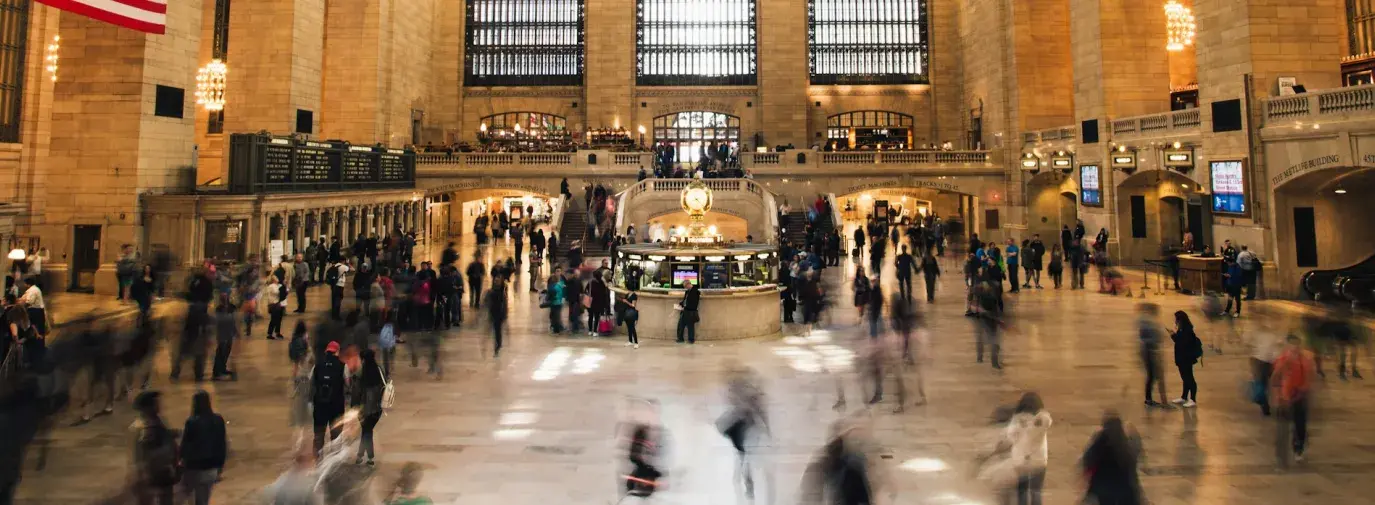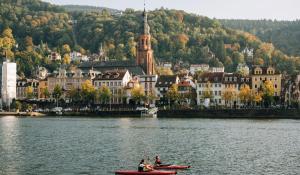
With rising global temperatures and an increasing number and frequency of extreme weather events, the toll of the climate crisis can be seen in towns and cities across the globe. As Green Americans, we have adopted our own sustainable habits to cool the planet, from installing energy-efficient appliances to prioritizing walking and biking and more, but for widespread and equitable change that helps all people, elected officials need to be working with us to support sustainable choices for our cities and towns.
Our hometown communities are special and meaningful to us—the locations of our favorite restaurants, our schools, and memories with loved ones—and it’s time to demand more from officials to steward the cities that elected them to a safe, just, and healthy future.
Improve What’s Already There
Buildings are some of the biggest culprits of the worsening climate crisis, trapping heat, and using exorbitant amounts of energy (one-third of all energy consumed by US commercial buildings goes to waste). That’s where retrofitting comes in. The Inflation Reduction Act (IRA) has made popular retrofits like solar panels and water heaters more affordable for individuals. We must also advocate for our city officials to pursue these retrofits in our public spaces—among other solutions for cities overall.
For example, painting buildings—and especially roofs—white will reflect sunlight instead of absorbing it, helping to mitigate urban heat islands, especially in warmer climates. White roofs and buildings also help with energy costs, air pollution, and heat-related illness and mortality.
Albuquerque is one city making energy-efficiency strides. Sandra McCardell, president of Current-C Energy Systems and member of the Albuquerque Energy Council, wants her city’s journey to be a path that other cities can follow, and that citizens can demand. She’s particularly excited about the Balanced Resource Acquisition and Information Network (B.R.A.I.N.), first introduced in August 2022 and created by Saif Ismail, Division Manager for the City’s Energy & Sustainability Division.
“It was designed to integrate all utility information across all of the city’s facilities,” McCardell explains. “You can instantly find…which parts of which buildings are using the most and least energy.” In other words, B.R.A.I.N. uses data from connected devices (lights, water taps, etc.) to alert Ismail’s team immediately and identify an energy leak or other problem. Before B.R.A.I.N, diagnosing an energy problem took months or even years.
Officials estimated B.R.A.I.N. saved the city $355,000 in its first year alone and that it could transform cities across the country.
Green Is the Color of Equity
Dan Howells, Green America’s climate campaigns director, has another idea for improving cities: green roofs.
“Making the top of a roof a park or garden is proven to regulate the temperature of the building, requiring less energy to do so, and also remove pollution and CO2 from the air,” he explains. Howells notes that green roofs are particularly effective for large buildings, such as schools, hospitals, government buildings, or large commercial buildings like warehouses or big-box stores. Green roofs have been found to assist less with a building’s energy efficiency than white roofs (many large buildings may have space to install both), but at the same time provide many other benefits for cities.
For example, green spaces have been linked to myriad health benefits, from better sleep and lower blood pressure to decreases in anxiety and depression. A 2023 study in Science of the Total Environment warned, however, that green spaces alone are not enough to counteract health risks from systemic problems like housing discrimination and segregation, and Howells points out that cities need to prioritize green space for all their residents.
“To improve all citizens’ quality of life and bring justice and equity to our communities, city officials should ensure that climate improvements appear in all neighborhoods, prioritizing healthy access to green space for everyone,” Howells said, adding that green roofs can help mitigate other systemic inequality issues such lack of access to healthy, affordable food in lower-income or BIPOC communities.
“If you take a space that isn’t being used, like a high school gym roof, and you turn it into a garden, we can reduce food deserts and more people will have access to fresh food,” Howells explains. Legislation mandating city-owned buildings develop green roofs, or providing tax incentives or grants for residents to do so, are ways city officials can ensure progress for people and planet.

Less Driving, More Neighborhood Exploration
Recently, in my home-city of Los Angeles, I saw a billboard I can’t forget. It read: “In 2022, more pedestrians died on Vermont Ave. [a major street in LA] than in the state of Vermont.” The billboard was promoting Measure HLA, a ballot measure in the recent 2024 primary.
The measure says when Los Angeles initiates improvement projects (like paving) for city-owned streets, the city must make related improvements to the street’s pedestrian, bicycle, and transit infrastructure. The measure fills a gap in the city’s “Mobility Plan 35,” an initiative passed in 2015 to promote greener transportation in theory, but which lacked an implementation plan which prioritizes bike and bus lines, safety, sustainable changes, and more. Angelenos overwhelmingly voted yes on Measure HLA and it will now be implemented in the notoriously car-dense city.
Transportation accounts for 29% of greenhouse gas (GHG) emissions in the US, making it the largest contributor overall. Fewer gas and diesel vehicles on the road mean a reduction in GHG emissions and air pollution. Plus, taking time to explore a neighborhood on foot or pedals encourages us all to become better acquainted with where we live.
Even better, the League of American Bicyclists confirmed in its report “Bicycling Means Business” that local businesses benefit from investments made towards safer streets and cyclists, stating: “People who had biked and walked to [a shopping] area reported that they spent more money in the area per month than those who drove there.”
Demand More from Your City
Progress and change require several things: solutions, demand, money. Solutions are plentiful, but the cost can make them prohibitive.
Fortunately, there is federal aid available, such as the Justice40 initiative, which directs 40% of investments from federal programs like the climate-friendly IRA mentioned above into disadvantaged communities.
Launched in 2021 via executive order by the Biden administration, Justice40’s future could be at risk in the next election. McCardell secured some of the first $27 million in Justice40 grants for clean-energy improvements by state, local, and Tribal governments, announced by the Department of Energy in April.
“I was on the team that put the special application together for the city of Las Cruces,” she says, and ultimately Las Cruces received $400,000, to cover at the first phase of their clean-energy work, with the possibility of renewal. “These prizes are distributed through a platform called HeroX, and anyone can search for other prizes their city can apply to. They provide extensive support, especially for those who may not be familiar with grant applications.”
In Las Cruces, the money is going towards Plugged in for Good (PIFG) Energy Alliance and will address matters like reducing energy use, promoting clean energy systems, protecting residents during extreme heat, and retrofitting residential buildings.
McCardell is willing to help anyone who wants their own city to adopt B.R.A.I.N. or get more information on Justice40 prizes. Contact Anya Crittenton (acrittenton@greenamerica.org) for more information.
We may not have originally developed the places we live in to face a climate crisis, but solutions exist and it’s time to put pressure on local officials to make them happen.
Questions to ask your local candidates:
- Will you pledge to work to reduce GHG emissions and adapt our city’s infrastructure to combat the climate crisis?
- Will you consider adopting real-time energy monitoring, like the B.R.A.I.N. system, to manage energy-use by city buildings?
- Do you support teaching about causes of and solutions to the climate crisis in schools?
- Do you support the Climate Change Relief for Urban Areas Act of 2023, sponsored by Rep. Adam Schiff (D, CA), which will establish a program to award grants for rooftop gardens on public schools, among other climate-cooling initiatives?







